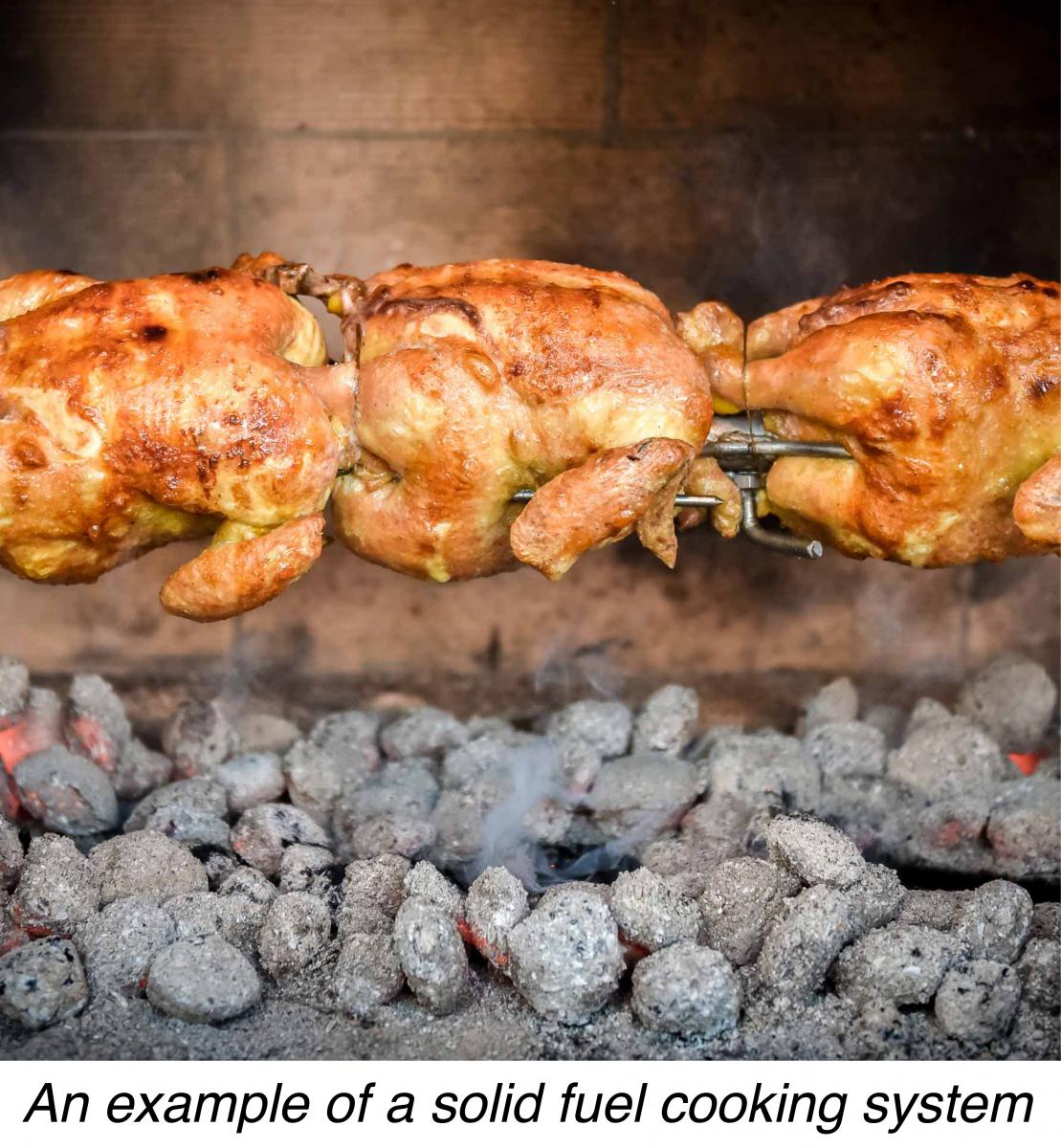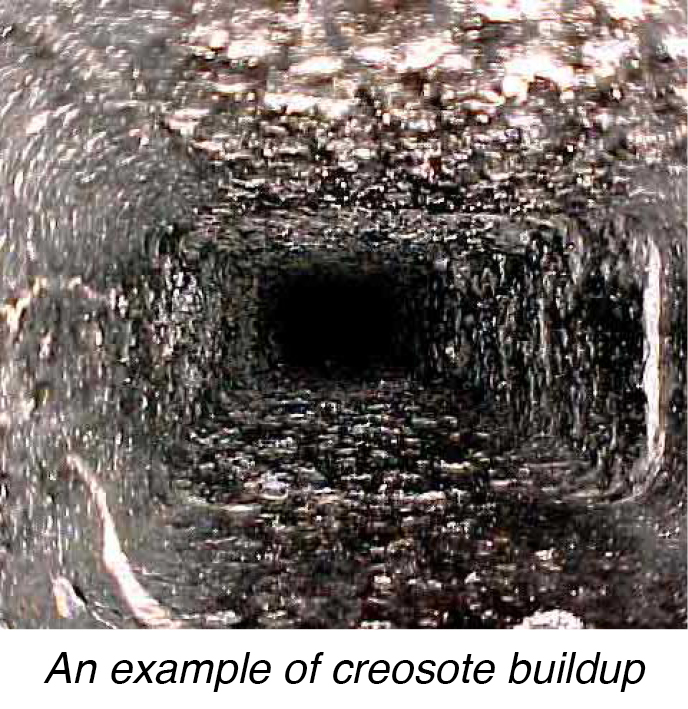In recent years solid fuel cooking systems have become extremely popular. Wood-fueled char-broilers, rotisseries, smokers, pit barbecues, and hearth and brick ovens are now all commonplace – especially in Sydney and Melbourne’s trendier restaurant districts.
This is great for diners seeking new and modern eating experiences. It’s also good news for restaurant owners, as a unique solid fuel cooking system can really help a business stand out from the competition.
However, as with all cooking equipment, there are certain risks associated with solid fuel cooking systems.
Chief among them are problems associated with creosote build-ups. In this week’s blog we’re going to explain what creosote is, and what business owners can do to protect their businesses from fires resulting from creosote build-ups.
 What is a solid fuel cooking system?
What is a solid fuel cooking system?
Solid fuel cooking systems are just that, systems which use solid fuel to cook various foods.
Whereas conventional ovens use gas or electricity, solid fuel systems utilise solid fuel such as hot coals and wood.
Some examples include: pit barbecues and rotisseries which use hot coals to cook meats through.
Other systems are categorised as live-fire.
The most popular live-fire cooking systems being hearth and brick ovens, which are used for making pizzas.
Other variants includes smokers, which use wet or dry components to smoke meats over several hours.
What is creosote?
According to the Cornell Cooperative Extension Service creosote is defined as follows. Creosote is made up of condensed volatile gases created by incomplete combustion of wood.
As these gases rise in the chimney, they cool, mix with water vapour, and form a tar like substance, which clings to chimney walls. This substance is highly combustible and is well known for its fire threat.
While traditionally creosote has been a problem associated with residential wood fires, it is now a concern for restaurant owners as creosote build-ups are common in solid fuel cooking systems.
So if you’re using a solid fuel cooking system, such as a wood-fired pizza oven or meat smoker, your business is at risk from creosote build-ups. Therefore steps should be taken to minimise the problem and the potential harmful effects.
Why is creosote so dangerous?
The auto-ignition and flash point temperatures of wood tar creosote can be very low.
The flash point of wood creosote (with an ignition source present) can be as little as seventy-four degrees celsius. So something as little as a burning ember, spark, or flame can cause ignition. And of course, burning embers, sparks and open flames are usually present in live-fire, solid fuel cooking systems.
Creosote’s auto-ignition point (which does not require an ignition source) is two-hundred and thirty-three degrees celsius. This is considerably lower than the temperature required to auto-ignite simple grease.
Combined with a grease build-up in kitchen filters, canopy, or exhaust system, creosote can cause a serious fire fast, even at relatively low temperatures.
Which systems are most at risk?
The Chimney Safety Institute of America states that certain factors make for a high risk of creosote build-ups.
These factors include restricted air supply, cooler than normal chimney temperatures and unseasoned wood.
If creosote builds up in sufficient quantities and the internal flue temperature is high enough, the outcome can be a chimney fire; furthermore these fires can start very quickly and can be very powerful.
Therefore systems which operate with limited air flow, cooler than normal chimney temperatures or unseasoned wood are at the highest risk.
While these are the systems which are at the highest risk, all solid fuel cooking systems can potentially form creosote build-ups, and even small amounts of creosote can cause a fire.
Therefore if you’re using a solid fuel cooking system, having those creosote build-ups removed on a regular basis is essential.
How are creosote build-ups removed?
When it comes to the effective management and removal of creosote in your kitchen’s solid fuel system, there is just one solution. That solution is regular and professional cleaning.
Creosote can collect on your kitchen filters, canopy, flue and ducting. Removing it requires filter exchange and filter cleaning. As well as scrape cleaning of your kitchen exhaust system. Having creosote professionally scraped and cleaned away is the only way to prevent it building up in your system.
Even if your system is not considered high-risk, regular cleaning is still required to minimise the danger of kitchen fire.
“When it comes to effective removal of creosote there is just one solution.”
What access is required for creosote cleaning?
A condition of exhaust system cleaning is appropriate access to your kitchen’s canopy and ducting. Your kitchen cleaning company cannot clean areas where they cannot gain entry to.
Therefore to ensure a complete system clean, with all instances of creosote removed, appropriate access panels should be made available. If they are not presently installed, they will need to be, before the cleaning can take place.
While this can mean an additional one-off investment for the business owner, it is vital for the effective cleaning and removal or creosote.
The creosote risk: summary.
Build-ups of creosote are a risk for every business using solid fuel cooking systems. Especially those utilising live-fire variants. Creosote can ignite at a much lower temperature than grease, and the resulting fire can spread widely and quickly.
However the creosote risk can be effectively managed with regular professional cleaning – provided that appropriate access points are made available for a mechanical ventilation cleaning company such as Lotus Commercial to gain entry to your kitchen’s exhaust systems and ducting.
In short: with proper cleaning, restaurant owners can provide their patrons with the unique flavours of solid fuel cooking, without the dangers associated with unmaintained creosote build-ups.

 What is a solid fuel cooking system?
What is a solid fuel cooking system?